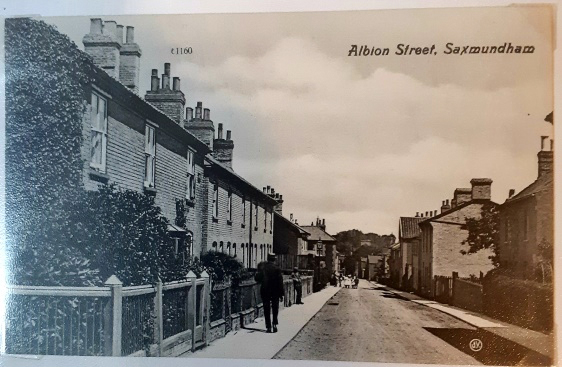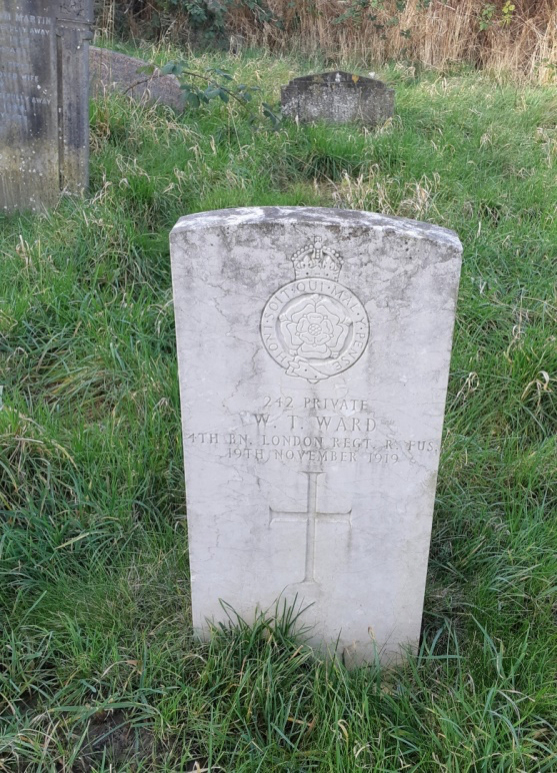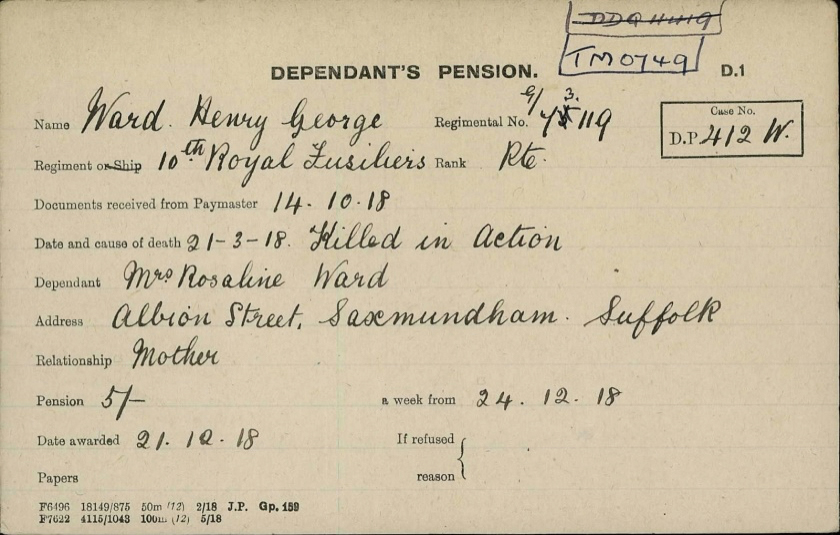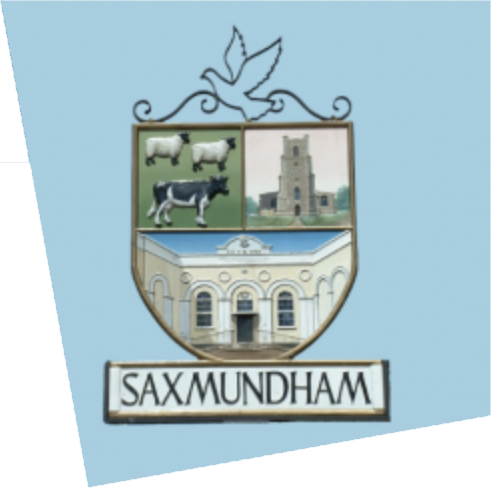Market Place, stop 15.
Private 242, William Thomas Ward, private 242, 4th Battalion, London Regiment, Royal Fusiliers, 1872 – 19 November 1919
and his son
Private 75119, Henry George Ward, (formerly 42063, 99th Territorial Battalion), 10th Battalion, London Regiment (The Royal Fusiliers), 2 February 1899 – 21 March 1918

Photo courtesy of Saxmundham Museum
William Thomas Ward
After serving with the Essex Regiment from May 1891 to March 1905 William Thomas joined the 4th Voluntary Brigade London Royal Fusiliers as a territorial soldier in April 1908. He re-enlisted for full time service in the battalion on the outbreak of the Great War in August 1914 aged 42and was posted to Malta between September 1914 to January 1915. On 6 February 1915 William arrived in France and served in Belgium experiencing trench warfare and gas attacks of the Second Ypres offensive of 1915. With failing health, he was hospitalised for several weeks and ultimately considered unfit for active duty and medically discharged in August 1916. We can only definitely say William initially resided in the Market Place where he continued his trade as an Umbrella maker. Thereafter the family moved to Northcote, in Albion Street, Saxmundham where the family were struck by disaster. First, the death of their son, Henry George Ward, aged 19 years old, a private in the 10th Battalion of the Royal Fusiliers, (The Stockbroker’s Battalion) who lost his life in Belgium on 21 March 1918 followed by William who died in St Bartholomew’s Hospital, London of pernicious anaemia and heart failure on 19 November 1919, aged 47.
When researching the fallen heroes commemorated on War Memorials it becomes apparent that people were often not static in one area. William is a good example of one who left East London and set up home in Saxmundham.
William, his wife Rosaline and seven of their surviving children lived in Hoxton (part of the borough of Hackney and considered the East End) in 1911 where he worked as an Umbrella Maker. After serving with the Essex Regiment from May 1891 to March 1905 he joined the 4th Voluntary Brigade London Royal Fusiliers as a territorial soldier in April 1908. Seemingly a patriotic soldier, he re-enlisted for full time service in the battalion on the outbreak of the Great War in August 1914. At the age of 42, William found himself fighting for his country.
William’s first posting to Malta between September 1914 to January 1915 was probably the best albeit many troops spent their time in tented camps during winter and often struggled to keep their temporary homes from blowing away. It was a far better place than his next posting. On 6 February 1915 William arrived in France, thence served in Belgium experiencing trench warfare and gas attacks of the Second Ypres offensive of 1915. His health started to fail. Suffering from lung problems William was hospitalised in February 1915 for several weeks before returning to his battalion. Unfit for active duty, William was medically discharged in August 1916. Whilst the army medical examiner reported that his medical condition was not caused by army service, the dreadful conditions and exposure to gas would have aggravated his condition. Probably the air pollution in the capital also made his breathing worse.
Perhaps he moved his family out of the East End of London to benefit from some good Saxmundham fresh air. Our region was not unknown to Eastenders. The proximity of the Hollesley Bay Colony, an institute for unemployed Londoners provided training in agricultural skills and other young men were sent by Banardo’s to HMS Ganges at Shotley for navy service. Alternatively, William due to his earlier army service, had likely travelled extensively and perhaps knew the area? We can only definitely say William initially resided in the Market Place where he continued his trade as an Umbrella maker. Thereafter the family moved to Northcote, in Albion Street, Saxmundham where the family were struck by disaster.
First, the death of their son, Henry George Ward, aged 19 years old, a private in the 10th Battalion of the Royal Fusiliers, (The Stockbroker’s Battalion) who lost his life in Belgium on 21 March 1918 followed by William who died in St Bartholomew’s Hospital, London of pernicious anaemia and heart failure on 19 November 1919, aged 47. William’s family brought his body home for burial in the former Congregational Chapel (now the United Reformed Church).

Henry George born 2 February 1899 was baptised in Shoreditch, London. Whilst not eligible for active service until he attained his eighteenth birthday it is likely that Henry enlisted in Holloway into the London Territorial Battalion prior to transferral to the Royal Fusiliers (The Stockbrokers Battalion). He survived just over one month in active service and died in action on 21 March 1918. Henry is buried in the Huts cemetery, Ypres and the personal inscription on the gravestone, organised by his brother, Charles, reads ‘He died that we might live’. Additionally he is commemorated on Saxmundham Chapel, Church and Fromus Square memorials.

Henry’s mother claimed her son’s dependant’s pension and she and her unmarried sons lived in Saxmundham until at least 1921. The eldest son, William worked as an insurance agent in Ipswich, Charles, a clerk was employed by S A Flick, the auctioneer and George and James worked for W Wells and Son the ironmongers. To help with finances, Rosaline took in boarders.

